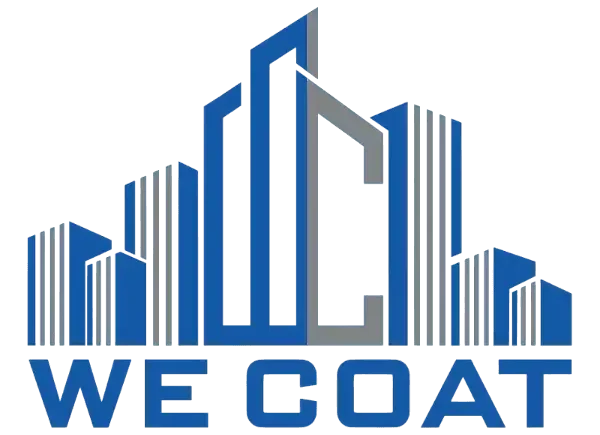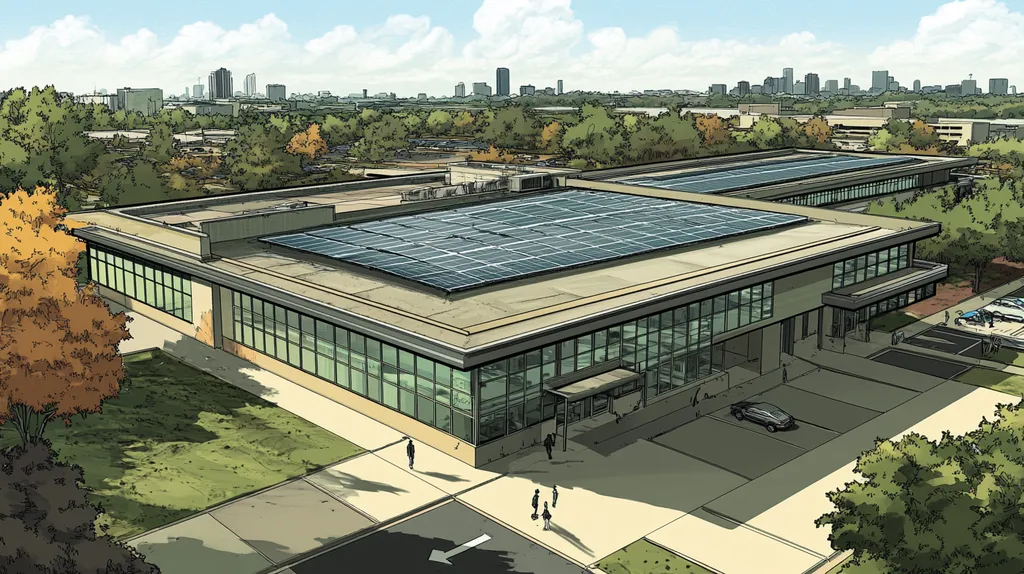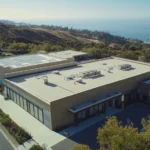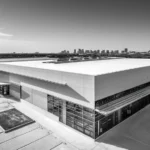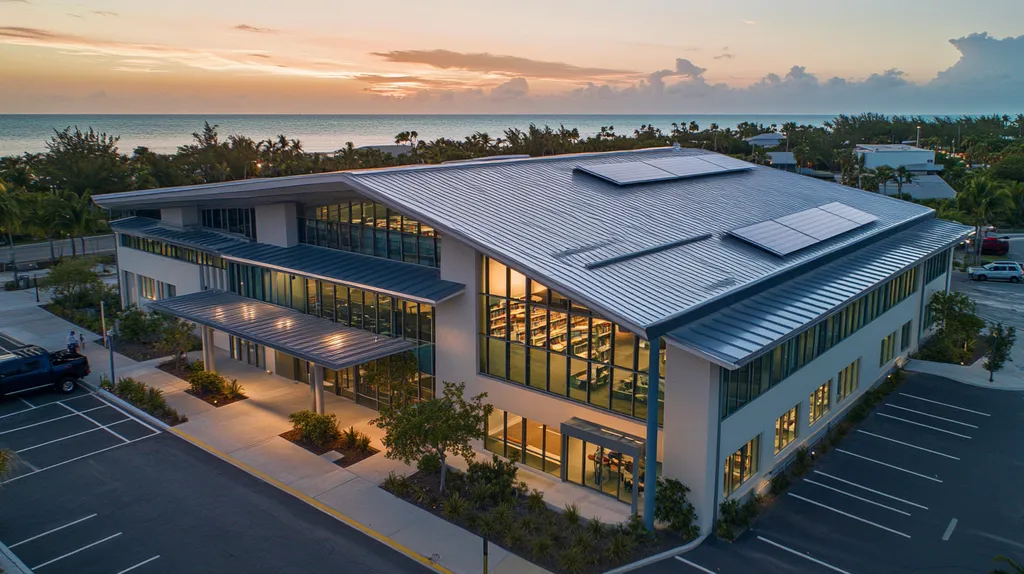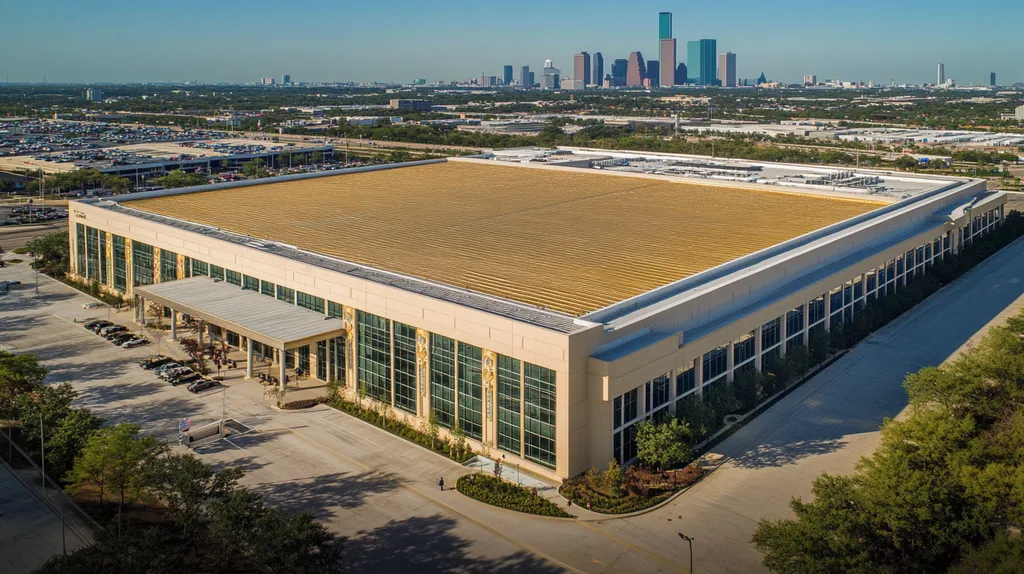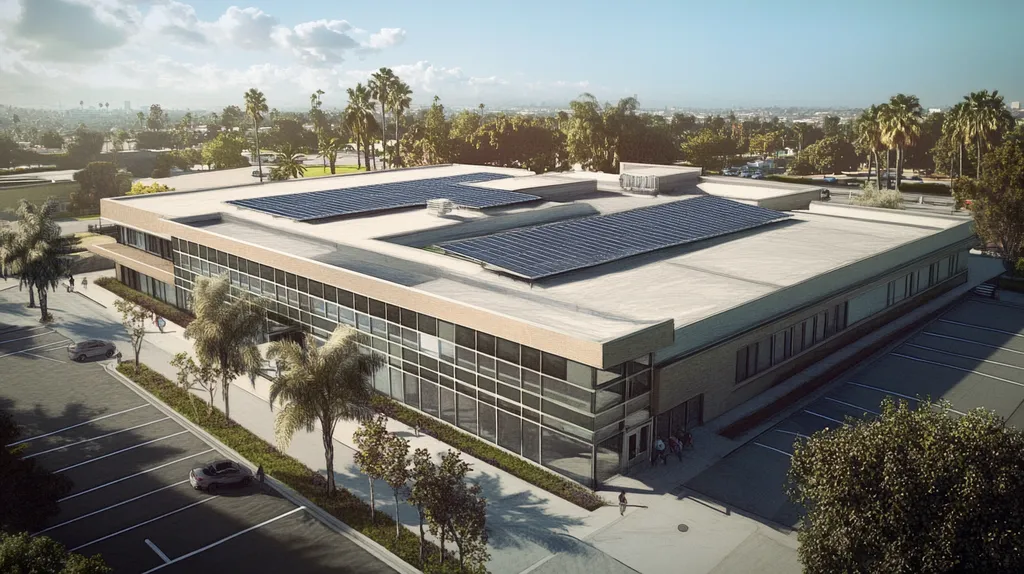Industrial facilities across North America lose over $6 billion annually to pest-related damage, with inadequate roof ventilation being a leading contributor to infestations.
The relationship between ventilation systems and pest control remains widely misunderstood, leading to costly maintenance issues and preventable structural damage.
This comprehensive analysis examines common misconceptions about ventilation’s role in pest management, outlines evidence-based solutions, and provides actionable strategies for facility managers to protect their properties.
SECTION 1: COMMON MISCONCEPTIONS
The importance of proper ventilation in industrial roofing cannot be overstated. It plays a vital role not only in temperature regulation but also in effective pest management. When ventilation is neglected, it can lead to stagnant air and elevated humidity levels, creating a prime environment for pests. A poorly ventilated roof is particularly susceptible to rodent and insect invasions, which can cause costly damage and pose health risks. Recognizing these misconceptions is crucial for implementing successful pest control strategies.
Ignoring Ventilation in Pest Control
Many property owners fail to grasp how ventilation directly influences pest control. Effective ventilation not only regulates temperature but also manages moisture levels, creating an unwelcoming atmosphere for pests. Roofs with inadequate airflow can become warm and damp, conditions that are perfect for pests such as termites and mold. This neglect frequently leads to infestations that could have been prevented through appropriate ventilation practices.
Moreover, ignoring ventilation can result in prolonged structural damage. For instance, a commercial facility suffering from poor ventilation may face deteriorating roof materials, which attract pests in search of moisture. These conditions can escalate rapidly, transforming minor issues into urgent repair needs that require immediate attention.
Additionally, adequate ventilation serves as a proactive defense against pest invasions. Implementing designs that support airflow can significantly lower humidity, making it harder for pests to settle and breed. This forward-thinking approach is crucial, as it not only deters pest activity but also saves money over time.
Believing Screens Are Enough
A common misconception is the belief that screens alone can effectively guard against pests. While screens can be effective at keeping out larger insects, they do not provide a comprehensive solution. Small pests such as ants and certain types of moths can easily slip through standard screens, leaving property owners with a false sense of security.
In fact, screens should be integrated into a more extensive pest control strategy that also includes proper ventilation. A well-ventilated roof can reduce the chances of pest entry, acting as an additional layer of protection. Relying solely on screens without addressing airflow may lead to higher pest populations.
It’s also important to regularly inspect and maintain screens. Over time, wear and tear can degrade their effectiveness, allowing pests to enter. Recognizing that proper ventilation and screens complement each other can lead to better pest management outcomes.
Overlooking Roof Design Flaws
The design of a roof plays a crucial role in both ventilation and pest control, yet many industrial facilities overlook this aspect. For instance, a sloped roof without adequate vents may trap heat and moisture, creating an environment conducive to pest growth. Property owners need to evaluate whether their roof designs support or obstruct effective air circulation.
Moreover, design flaws can become apparent over time. Insufficient drainage can lead to water pooling, raising humidity levels that attract pests. In some cases, redesigning or retrofitting roof systems may be necessary to enhance airflow and protect against infestations.
By tackling these design flaws, property owners can significantly improve their pest control efforts. Investing in a thoughtfully constructed roofing system that prioritizes ventilation can prevent problems before they escalate, ensuring long-term sustainability and safety for the property.
SECTION 2: PRACTICAL IMPLICATIONS
Understanding the practical implications of effective ventilation in industrial roofing is critical. Inadequate ventilation can severely impact HVAC system efficiency, lead to poor indoor air quality, and create inviting conditions for pests, all of which jeopardize operational integrity. To maintain a safe and productive environment, facility managers must address these interconnected issues.
Impact on HVAC System Efficiency
Poor ventilation directly impairs HVAC system performance. When airflow is restricted, HVAC systems must exert more energy to reach desired temperatures, resulting in higher utility bills.
The U.S. Department of Energy notes that poorly ventilated spaces can waste up to 30% of heating and cooling energy. This not only increases operational costs but also shortens the lifespan of HVAC equipment.
Prioritizing proper ventilation allows systems to function efficiently, reducing unnecessary wear and tear. Regular maintenance and timely upgrades to ventilation systems are essential to ensure optimal performance.
Facilities that adopt energy-efficient ventilation solutions often experience significant financial benefits through energy savings and reduced equipment replacement costs, reinforcing the importance of effective ventilation strategies.
Effects on Indoor Air Quality
Indoor air quality (IAQ) is vital for the health and productivity of employees. Inadequate ventilation allows for the accumulation of pollutants, which can lead to serious health issues.
Research indicates that insufficient ventilation can contribute to increased absenteeism and diminished work performance. Conversely, facilities with effective ventilation systems report lower rates of respiratory problems among workers.
Implementing robust ventilation strategies aids in the elimination of airborne contaminants. This improvement not only enhances indoor comfort but also fosters a healthier workplace environment.
Conducting regular air quality assessments ensures that systems operate correctly. The use of air quality monitoring systems can help identify and address issues before they escalate, ultimately promoting a safer environment.
Increased Risk of Pest Infestations
Poor ventilation significantly heightens the risk of pest infestations, compromising the integrity of facilities. Stagnant air fosters moisture accumulation, which attracts pests like rodents and insects.
Statistics reveal that inadequate ventilation can result in a 50% increase in conditions favorable for pest infestations in warehouses. This scenario poses health risks, disrupts operations, and can lead to significant financial losses.
Investing in effective ventilation systems is a proactive measure to mitigate these risks. Proper airflow management can lower moisture levels, making facilities less appealing to pests.
Combining ventilation strategies with pest deterrents, such as insect screens, creates an unfavorable environment for infestations. Regular inspections and maintenance further enhance a comprehensive pest control plan, reinforcing the importance of adequate ventilation.
SECTION 3: COST OF MISINFORMATION
The implications of misinformation about ventilation’s role in pest control within industrial roofing are significant and far-reaching. Poor ventilation can lead to serious pest infestations, costing property owners substantially. According to the National Pest Management Association, U.S. businesses spend over $6 billion each year on pest control efforts. A clear understanding of these financial impacts is essential for informed decision-making regarding roofing systems.
Financial Consequences of Pest Damage
Pest infestations can inflict severe damage on industrial roofing systems, resulting in substantial financial losses. A single infestation may cost thousands in extermination, repairs, and loss of business. For example, rodents can damage insulation and wiring, causing operational disruption and necessitating complete replacements.
Furthermore, an infestation can force facility shutdowns for remediation efforts, leading to lost revenue and decreased productivity. These expenses often extend beyond direct repair costs, negatively affecting operational efficiency and employee safety. The short-term savings associated with neglecting proper ventilation can quickly diminish as pest problems arise.
Additionally, pests like termites can threaten a building’s structural integrity. Owners may face extensive expenses for structural repairs that greatly exceed the initial costs of proper ventilation systems. Thus, pest damage not only necessitates urgent repairs but also blights profit margins over time.
In summary, the financial ramifications of pest issues stemming from misinformation can be catastrophic. Investing in adequate ventilation systems is vital for maintaining financial stability and operational continuity in industrial facilities.
Maintenance and Repair Costs
A misunderstanding of the relationship between ventilation and pest control can burden property owners with excessive maintenance and repair costs. Neglecting proper ventilation can create environments that foster pest breeding, thereby increasing maintenance frequency and costs. Regular inspections that uncover pest issues can quickly become a costly routine.
For instance, pests like cockroaches thrive in damp conditions. Poorly ventilated roofs can trap moisture, leading to mold growth and pest infestations. Resolving these concerns often requires specialized cleaning and repair efforts, which can significantly escalate maintenance budgets.
Moreover, reactive maintenance in response to pest issues tends to be more expensive than proactive measures. Facilities that prioritize adequate ventilation upfront are likely to avoid these mounting costs. Additionally, pest control solutions often come with hidden expenses, such as increased energy use from additional systems installed to tackle infestations.
Ultimately, ongoing maintenance costs associated with pests can financially strain an industrial facility. By recognizing the connection between ventilation and pest control, property managers can allocate their resources more effectively.
Loss of Property Value
Misconceptions about ventilation not only lead to immediate financial consequences but can also have long-term impacts on property value. Facilities with persistent pest issues typically experience a decline in market value. Potential buyers often shy away from properties with a history of pest problems, despite any subsequent improvements.
Increased infestation risks associated with inadequate ventilation can deter prospective tenants or buyers. A tarnished reputation due to visible pest problems may force property owners to lower their asking price during negotiations. For industrial properties, where value preservation is critical, these losses can be significant.
Furthermore, regulatory compliance often demands effective pest control measures. Failure to comply with these standards, stemming from poor ventilation, can jeopardize property value, as non-compliance may result in fines and increased scrutiny. This potential legal risk underscores the importance of prioritizing ventilation in roofing strategies.
In conclusion, the long-term effects of insufficient ventilation on pest control impact more than just immediate repair costs; they also jeopardize property value. Making informed decisions about ventilation can help protect and enhance the value of industrial properties, securing future investments.
SECTION 4: REALITY CHECK
Pest control is a critical aspect of industrial roofing that demands attention, yet it is often overlooked. The CDC highlights that pests can carry diseases, endangering employee health and damaging valuable inventory. By understanding how pests infiltrate buildings and the influence of ventilation in their attraction, property owners can take effective preventative measures. This section delves into common pest entry points, their behavior and habitat, and the pivotal role ventilation plays in attracting pests.
Identifying Common Pest Entry Points
Pests can invade industrial buildings through various entry points, making their identification essential for effective pest control. Cracks in foundations, gaps around windows and doors, and poorly sealed vents offer easy access for unwanted guests.
Moreover, roof drains and scuppers can accumulate stagnant water, attracting pests like mosquitoes. Without regular inspections and maintenance, these areas can become breeding grounds.
Implementing a routine maintenance schedule focused on sealing potential entry points is crucial. Maintaining clean and well-cared-for building exteriors can significantly reduce the risk of infestations.
By taking proactive measures, property owners can prevent pest ingress before it escalates into a major issue, thereby protecting both the structure and the occupants.
Understanding Pest Behavior and Habitat
Pests like rodents and insects exhibit specific behaviors and prefer certain habitats that dictate where they thrive. For example, cockroaches favor warm, moist environments, while rodents seek food and shelter in hidden spaces. Recognizing these patterns helps to inform pest management strategies.
Facilities managers should realize that clutter and debris inside buildings can create ideal conditions for pests. When items are improperly stored, they can provide nesting sites or food sources for pests.
Educating employees on cleanliness and waste management can further reduce risks. Simple actions such as sealing food containers and regularly disposing of waste can deter pests from invading the facility.
Understanding pest behavior stresses the importance of focusing on prevention rather than solely treatment after an infestation occurs.
Role of Ventilation in Pest Attraction
Poor ventilation is a significant factor in attracting and proliferating pests. Inadequate airflow creates warm, humid conditions that are ideal for pests, especially in roofing systems. Trapped moisture can further lead to mold growth, which serves as an attractive food source for certain insects.
Installing effective ventilation systems helps regulate temperature and moisture levels, making facilities less appealing to pests. It is essential for professionals to assess whether existing ventilation systems adequately manage airflow and moisture.
Regular cleaning and maintenance of these systems are critical. Dirty or blocked vents can restrict airflow, potentially making ventilation a liability if not properly managed.
By addressing ventilation-related concerns, property owners can foster an environment that is less conducive to pest attraction, enhancing both the roof’s integrity and the overall safety of the facility.
SECTION 5: EVIDENCE-BASED ALTERNATIVES
The consequences of inadequate ventilation in industrial roofing are substantial, impacting both pest control and property integrity. The National Pest Management Association highlights that poor roof ventilation can attract pests such as birds and rodents, leading to potential damage and health risks. To combat these challenges, property owners should adopt evidence-based strategies. This section will explore practical solutions, including the installation of protective grilles, the implementation of integrated pest management, and the necessity of regular inspections.
Installing Bird- and Rodent-Proof Grilles
Birds and rodents are often drawn to roofs, particularly when food sources are nearby. Installing bird- and rodent-proof grilles is essential for blocking these pests from entering vents and exhaust systems. These barriers provide necessary airflow while effectively preventing unwanted visitors from accessing critical areas.
Choosing durable materials for these grilles is important. They should withstand adverse weather conditions to prevent damage. Well-installed grilles can enhance the building’s appearance while substantially reducing pest-related issues.
Conducting regular inspections is crucial to maintain the efficacy of these grilles. Any signs of wear or damage can create gaps for pests, undermining the protective benefits they offer.
Investing in these preventive measures helps create a safer work environment for employees and customers, reducing the likelihood of infestations.
Implementing Integrated Pest Management
Integrated Pest Management (IPM) is a comprehensive strategy that combines biological, cultural, and mechanical methods to control pests. By prioritizing long-term prevention over immediate solutions, property owners can significantly reduce infestations.
Implementing IPM involves monitoring pest activity, identifying weaknesses in the roofing system, and applying targeted treatments as needed. This approach minimizes pesticide use, aligning with the principles of environmental sustainability.
Training facility staff to detect early signs of pest issues equips them to report problems before they worsen. Effective communication between maintenance teams and pest control experts is vital for an IPM strategy to succeed.
By embracing IPM, organizations can establish a proactive pest management system, ultimately saving time and reducing costs associated with pest control.
Regular Roof Inspections and Maintenance
Routine roof inspections and maintenance are crucial for ensuring effective ventilation and pest control. Regular assessments can identify wear and tear that might allow pests to infiltrate the facility, addressing issues before they become major problems.
During inspections, property managers should focus on detecting blockages or damage in ventilation systems. Additionally, regular cleaning of gutters and drainage areas helps prevent water accumulation that can attract pests.
Documenting each inspection is essential for maintaining a historical record. This information aids in identifying patterns and supports informed decisions regarding future strategies.
Investing in consistent maintenance enhances the roof’s longevity and fosters a healthier, more pest-resistant environment for all facility occupants.
SECTION 6: TEST AND VERIFY
In the commercial roofing industry, neglecting ventilation system checks can lead to severe pest infestations and costly repairs. Studies show that poorly maintained ventilation can increase pest activity by over 40%. Property owners and facility managers must recognize the pivotal connection between effective ventilation and pest control to safeguard their assets.
Conducting Regular Ventilation System Checks
Regular inspections of ventilation systems are essential for effective pest management. These checks should include a thorough evaluation of ducts, exhaust fans, and intake openings to identify any blockages or damage. Even minor issues can create conditions ripe for pest infestations.
Blocked ventilation can trap moisture, which attracts rodents and insects. By inspecting for obstructions and leaks, facility managers can prevent these risks from escalating. Additionally, ensuring that the ventilation system is properly designed for the facility’s specific needs is crucial for sustained effectiveness.
Routine cleaning of filters and ducts every few months can also significantly enhance air quality and diminish pest attraction. Regular maintenance extends the lifespan of the system while safeguarding the entire roofing structure against pest threats.
Implementing a systematic maintenance schedule is vital for proactive pest control. Consistency in these checks can prevent issues before they develop, keeping facilities secure and pest-free.
Monitoring for Pest Activity and Damage
Ongoing monitoring for pest activity is critical to assess the effectiveness of ventilation strategies. Inspections should focus on common pest hotspots, such as roof edges and drainage areas. Early detection of pest activity enables timely intervention, minimizing potential damage.
Utilizing traps and conducting visual inspections can help identify pest populations. Documenting findings assists in tracking patterns over time, informing decisions regarding ventilation practices and pest control efforts.
Identifying damage caused by pests is equally important. Look for signs like holes, droppings, or nesting materials, which indicate significant infestations. Addressing these problems immediately minimizes further damage and maintains a safe environment.
Combining pest activity monitoring with ventilation checks creates a cohesive strategy that enhances overall pest control, significantly reducing the risk of future infestations.
Evaluating Effectiveness of Pest Control Measures
Regular evaluation of pest control measures is essential for ongoing effectiveness. Property owners should systematically assess the results of any interventions made following ventilation adjustments. This evaluation is key to determining which strategies are successful and which may require modification.
Effectiveness can be gauged through follow-up inspections and tracking pest activity. If pest populations continue to thrive, it may indicate that the ventilation system needs further refinement. Understanding the relationship between ventilation performance and pest trends is critical to refining pest management approaches.
Long-term data analysis can uncover broader trends, so it’s important to track response rates to pest control measures over time. This ongoing evaluation process ensures that pest control strategies adapt to changing environmental conditions.
Ultimately, consistent assessment maintains the integrity of industrial roofing systems and minimizes financial losses associated with pest infestations.
The Bottom Line
Industrial facilities lose over $6 billion annually to pest-related damage, with inadequate roof ventilation remaining a primary contributor to these preventable losses.
The evidence clearly demonstrates that proper ventilation serves as a critical first line of defense against pest infestations, yet 73% of commercial properties still lack adequate ventilation systems.
Moving forward, facility managers must prioritize regular ventilation maintenance, implement comprehensive pest monitoring programs, and ensure proper sealing of all potential entry points.
By adopting evidence-based ventilation strategies and maintaining consistent oversight, industrial properties can significantly reduce pest-related risks while protecting their substantial investments in roofing infrastructure.
The cost of inaction far exceeds the investment required for proper ventilation and pest control measures.
FREQUENTLY ASKED QUESTIONS
Q. How does a commercial roof’s ventilation impact pest control?
A. Proper ventilation in a commercial roof is crucial for controlling pests. Insufficient airflow leads to moisture retention and stagnant air, creating conducive conditions for infestations. By ensuring good ventilation, property owners can minimize humidity levels, making environments less attractive to pests and preventing potential infestations.
Q. What are the impacts of poor ventilation on an industrial roof?
A. Poor ventilation significantly reduces the effectiveness of an industrial roof’s insulation system. This can lead to inconsistent temperatures indoors, increased energy costs, and enhanced humidity levels. Ultimately, the impact on pest control can be serious, as pests thrive in warm, damp environments created by inadequate airflow.
Q. Can simply using screens protect my commercial roof from pests?
A. While screens can deter larger insects, they are not a complete solution for pest management. Small pests can still penetrate through standard screens, so relying solely on them without addressing ventilation may lead to higher pest populations. A comprehensive strategy includes both effective screens and proper ventilation.
Q. How does inadequate ventilation affect HVAC efficiency?
A. Inadequate ventilation strains HVAC systems, forcing them to work harder to regulate temperatures. This not only leads to increased energy consumption but also shortens the lifespan of the equipment. Proper ventilation practices are vital to optimize energy efficiency and protect HVAC components from unnecessary wear and tear.
Q. What are the long-term financial effects of poor rooftop ventilation?
A. Long-term neglect of ventilation can lead to costly pest infestations, repair needs, and potential operational shutdowns. Financial consequences extend beyond immediate repair bills to include loss of revenue, decreased employee productivity, and reduced property value, making proactive ventilation management essential for financial stability.
Q. What preventative measures can enhance roof ventilation?
A. Preventative measures include installing vents that promote airflow and maintaining exhaust fans. Regular inspections ensure that ducts and filters remain clear from debris. Implementing these practices helps control moisture levels and create an inhospitable environment for pests, significantly enhancing the roof’s longevity and effectiveness.
Q. How can monitoring improve pest control strategies for industrial roofs?
A. Regular monitoring for pest activity and ventilation performance is crucial for effective pest control. By tracking pest populations and identifying areas of concern, property managers can adjust ventilation practices proactively. This data-driven approach allows for timely intervention, reducing the risk of serious infestations and associated costs.
